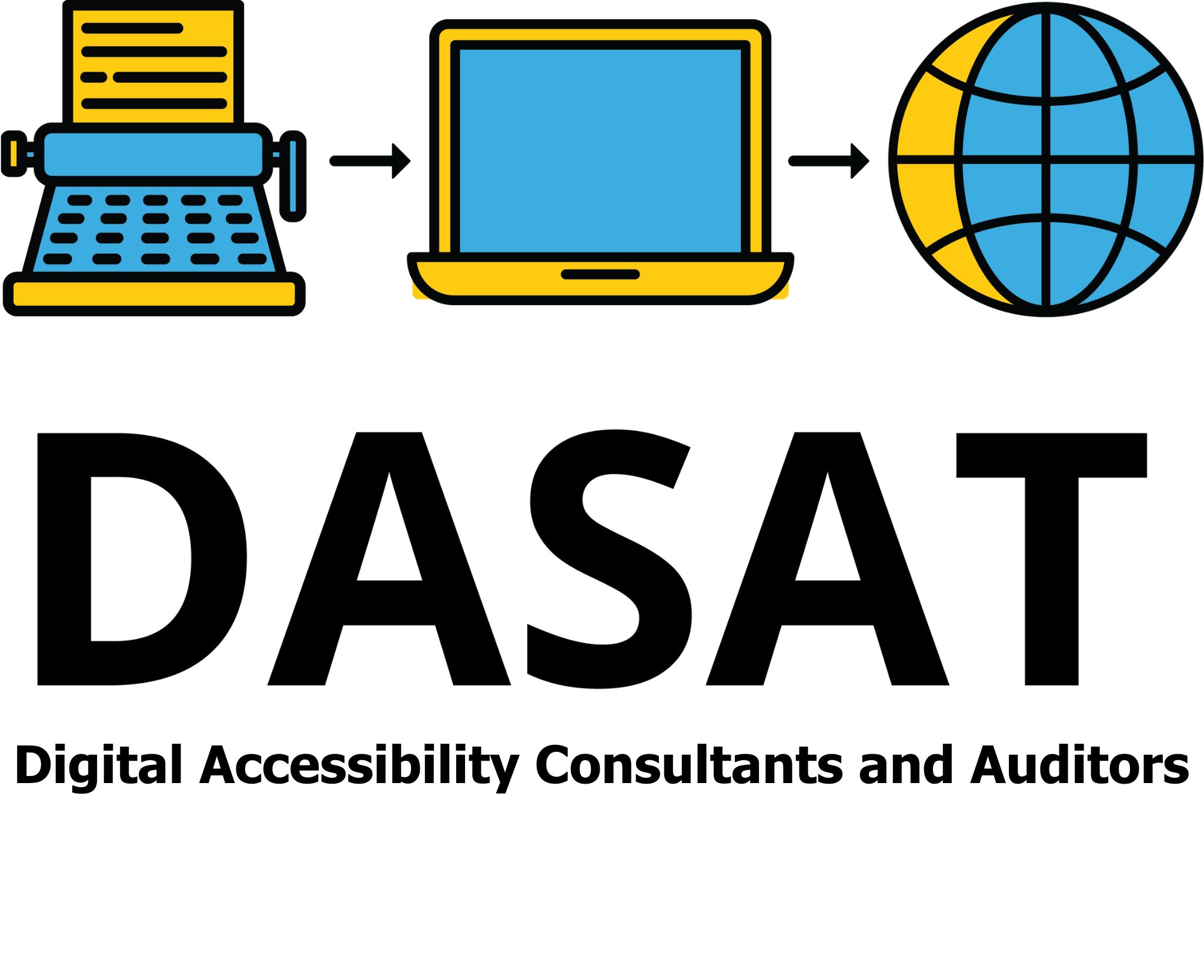
User testing matters for digital accessibility.
User testing is one of the most important steps in creating websites, apps, and other digital products. It helps us understand how real people use what we’ve made and where there are issues for the users. But one part that often gets missed in user testing is digital accessibility.
Digital accessibility is not something that should be added at the end. It should be part of the whole process from design through to release and beyond. However, especially when we test with users. You can learn more about accessibility through the DASAT accessibility training pages. Here’s how digital accessibility connects to user testing and why it is so important.

Where Digital Accessibility Fits into User Testing
User testing means watching and listening to real users as they try to complete tasks using a digital product. If you’re building a form, for example, user testing shows whether people understand the questions, know how to click the right button, and can finish the form without getting frustrated.
Now think about users who are blind, deaf, have low vision, use a screen reader, or rely on voice commands. Will the form still work for them? That’s where accessibility comes in.
Digital accessibility fits into user testing at every stage. You can’t tell if something is accessible just by guessing or running it through a scanner. You need to ask people with different types of disabilities to test your product. That’s how you know if your content is truly usable by everyone.

When Should You Test for Accessibility?
The best time to test for accessibility is early and often.
- Before you build: Ask people with disability to look at your design mock ups or wireframes.
- While you’re building: Test small parts of your site or app as they’re being made. This stops problems from growing later.
- Before going live: Do a full round of user testing that includes people with a range of needs and assistive technologies.
- After launching: Keep checking your product as you update it. Accessibility isn’t a one-time job.
It’s much cheaper to fix an issue early in a project than to try to fix it after everything’s been built. Regular testing helps spot barriers before they affect users.

Who Should Do the Testing?
User testing should include a mix of people. This means:
- People with a range of abilities and disabilities
- People who use different devices, browsers, and assistive tech
- People with different levels of digital confidence
You should also involve different roles on your team. Designers, content writers, developers, and testers should all be part of the process. Each role sees things differently, and everyone needs to understand how users experience the product.
It’s also important to pay testers for their time, especially people from the disability community. Their feedback is valuable and should be treated with respect.

Should Developers Be Doing Accessibility Testing Too?
Yes. Developers should definitely include accessibility testing in their everyday work.
There are tools that can help catch code problems that make a site hard to use—for example, missing labels on form fields or low colour contrast. But developers shouldn’t rely only on tools. They should:
- Use the keyboard to test navigation (no mouse)
- Check colour and contrast using the built-in colour filters.
- Use screen readers to check how content is read out loud.
- Try zooming in and increasing text size.
- Use code that follows accessibility standards from the start.
When developers understand how their code affects real people, the whole product gets better. It’s not just about fixing things; it’s about building them right in the first place.

Quick Tips for User Testing with Accessibility in Mind
Here are some practical ways to include accessibility in your user testing:
- Include a diverse range of users: Ask people with different types of disability to test your content.
- Have a test plan that includes digital accessibility. That is, tests that include testing for colour and contrast, missing labels and alternate text.
- Use plain language: Make tasks simple and clear so the focus stays on usability, not instructions.
- Ask open-ended questions: “What was hard about that?” instead of “Did you find that easy?”
- Test with different devices: Mobile, desktop, tablets, screen readers, voice input, and keyboard only.
- Record user feedback: With permission, use notes or recordings to track where people struggle.
- Follow up: After testing, fix the issues—and test again.
User testing isn’t about ticking a box. It’s about learning what works and what doesn’t for real people.

Why It’s Worth Doing
If you believe you’ve been discriminated against, here’s how you can take action:
- Lodge a Complaint
Head to the Australian Human Rights Commission website to fill out a form. You can do this online or by post. You’ll need to explain what happened and who was involved. - Complaint Review
The Commission will decide if your complaint fits within the law. If it does, they’ll contact the other person or business involved. - Try Conciliation
If both parties agree, a private discussion (called conciliation) is set up. This meeting is to help reach an agreement. Outcomes might include an apology, compensation, or changes in policy. - Go Further if Needed
If conciliation doesn’t solve the issue, you might be able to take the case to the Federal Court of Australia or the Federal Circuit and Family Court of Australia. You’ll usually need legal advice at this stage.
If your issue is covered by your state’s law, contact your local anti-discrimination agency. They have similar complaint processes and can guide you through what to do.

Final Thoughts
User testing that includes accessibility helps build better digital products. It’s not extra, it’s essential.
Are you asking the right users the right questions at the right time?
